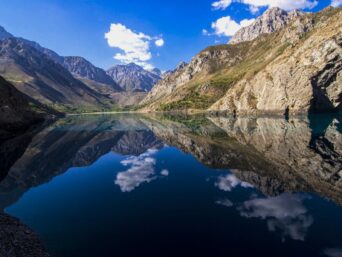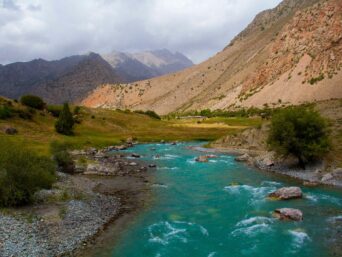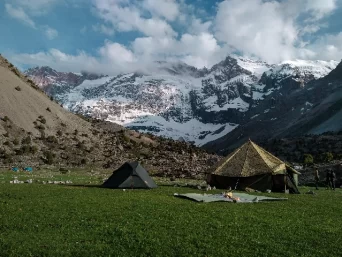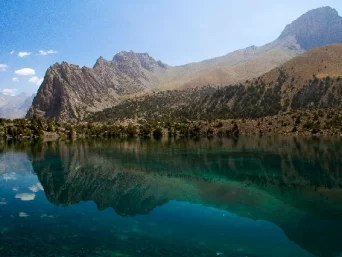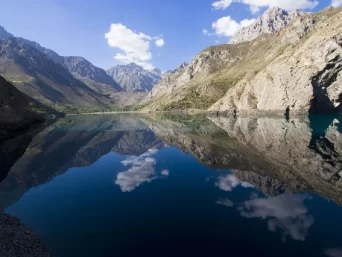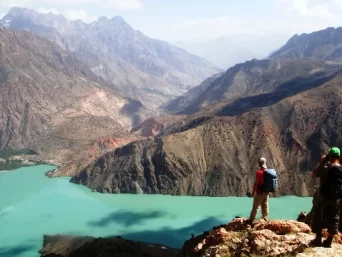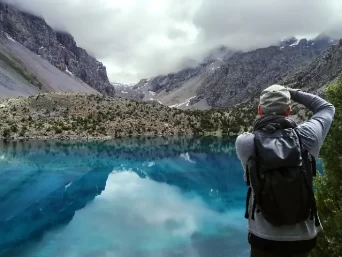Interesting
In the 1st millennium B.C., Soghd (Sogdiana or Sogdia) was a center of a developed ancient civilization with high levels of culture, arts and crafts. In the VIII century the troops of the Arab Caliphate invaded Central Asia, and with fire and sword spread a new religion – Islam. The Sogdians escaped through this inaccessible mountain gorge. At the eastern edge of the Zarafshon Valley, it is still possible to hear the Sogdian language being spoken.
This was the language of the Persian kings and of Roxanne, the wife of Alexander the Great. In the 1970’s many inhabitants of the higher territories of the Zarafshon Valley were resettled to undeveloped lands of the present Ganchi, Zafarabad and Mastchoh Districts. Among this population there were Yaghnobi people too.
But in the 1990’s after Tajikistan gained independence many began to return back to their old villages. Today there are Yaghnobies living in 14 of the 22 villages of the valley. Here they have been striving to preserve their culture and traditions, including elements of their ancestors’ fire worshiping Sogdian religion – Zoroastrianism.
Tour Program
Arrival in the Margeb Village.* Dinner and overnight at traditional Home Stay “Sayyoh”.
After breakfast we drive to Shahsara (25km, 1h) and from here we will start our hike to the Yaghnob Village of Naumetkan (6km, 3hs) where 12 families live. Excursion and lunch in a traditional Yaghnob house.* After lunch we will continue our hike towards Tangi Chanor (1km, 30min). During the hike you will see alpine pastures which extend between the mountain ranges to the north and south of the valley. Wildlife is abundant, particularly birds including the large lammergeyer and eagles. Marmots are the most frequently encountered animals of the Yaghnob fauna. Dinner and overnight in the camp.
After breakfast we start our hike towards the “Yaghnob Canyon” called by locals TANGI (narrow gorge) (4km, 1h). It is located at the crossing of two rivers called Duoba. Close to Duoba we will visit an ancient stone mill, which is still working and some petroglyphes. We proceed along the Yaghnob River to the heart of the Yaghnob Gorge: the settlements of Pskon and Naumetkan (7km, 2hs). In the Pskon Village the local musicians Boboi Inoyat and Boimurod will entertain you with yangobi songs. After lunch we will go to the eastern part of the Valley towards Kiryonte Village (10km, 3hs). On the way we will see 7 pillars still remaining from the Zoroastrian times. Legend about these pillars will be told by villagers during dinner. Dinner and overnight in the camp close to Kiryonte.
After breakfast we will have a chance to visit the places where petroglyphs are found. Then we will hike down to Pskon Village (10km, 3hs) .Here we will have lunch and then a short visit to the local school that serves children from eight families. By evening we will reach the village of Naumetkan (12km, 4hs), where the car will take you back to Margheb (32km, 1.5hs). Dinner and overnight at the homestay “Zaminqaror” in Margheb.
Departure

